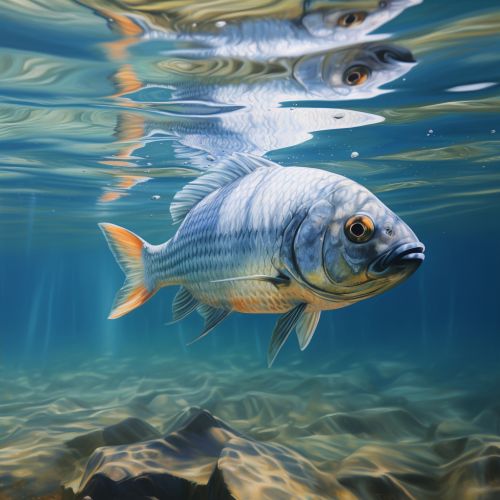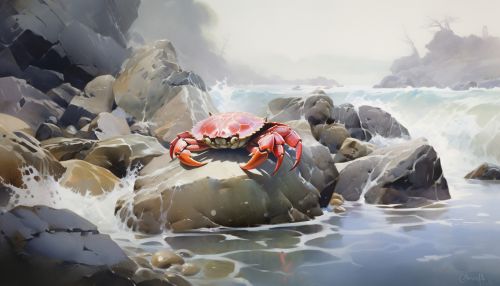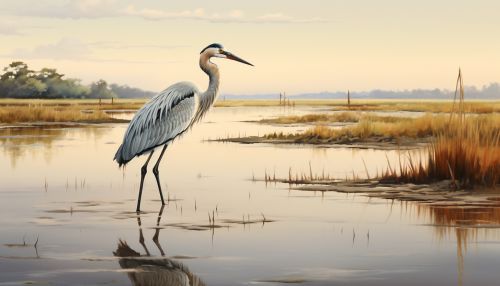Biological Mechanisms of Animal Adaptation to Estuarine Environments
Introduction
Estuaries, the transitional zones where rivers meet the sea, are unique ecosystems characterized by a blend of fresh and saltwater, fluctuating water levels, and variable temperatures. These conditions present a unique set of challenges to the animals that inhabit them, necessitating a range of biological adaptations. This article explores the biological mechanisms that enable animals to adapt to estuarine environments.


Physical and Chemical Conditions in Estuaries
Estuaries are dynamic environments with a range of physical and chemical conditions that fluctuate on both diurnal and seasonal scales. These include variations in salinity, temperature, oxygen levels, and water flow. The ability of animals to survive and thrive in these conditions is largely dependent on their physiological adaptations.
Salinity
The salinity of estuarine waters can range from fresh to fully marine, and can change rapidly due to tidal action and freshwater input from rivers. Animals living in these environments have developed various mechanisms to cope with these changes. For example, many estuarine fish species are euryhaline, meaning they can tolerate a wide range of salinity levels. They do this by adjusting their internal salt concentrations through a process known as osmoregulation.


Temperature
Estuaries can also experience wide temperature fluctuations, with changes occurring on both daily and seasonal scales. Animals living in these environments must be able to tolerate these changes. Many species have developed behavioral adaptations, such as moving to deeper waters during periods of extreme temperatures. Others have physiological adaptations, such as the ability to alter their metabolic rates in response to temperature changes.
Oxygen Levels
Oxygen levels in estuaries can also vary greatly, due to factors such as temperature, salinity, and the presence of organic matter. Many estuarine animals have developed adaptations to cope with low oxygen levels. For example, some species of fish and invertebrates can increase their breathing rate or switch to anaerobic respiration when oxygen levels are low.
Water Flow
The water flow in estuaries can be highly variable, due to tidal action and river flow. Animals living in these environments must be able to withstand strong currents and rapid changes in water level. Many have developed physical adaptations, such as streamlined bodies or strong swimming abilities, to cope with these conditions.


Biological Adaptations to Estuarine Conditions
The unique conditions in estuaries have led to the evolution of a range of biological adaptations in the animals that inhabit them. These adaptations can be broadly categorized into physiological, morphological, and behavioral adaptations.
Physiological Adaptations
Physiological adaptations are changes in an animal's internal functions that enable it to survive in its environment. In estuaries, these adaptations often involve the ability to regulate internal conditions in response to external changes. For example, many estuarine animals can regulate their internal salt and water balance in response to changes in salinity, a process known as osmoregulation. Similarly, many species can adjust their metabolic rates in response to changes in temperature or oxygen levels.
Morphological Adaptations
Morphological adaptations are physical changes in an animal's body structure that enhance its survival in its environment. In estuaries, these adaptations often involve modifications to the body shape or size, or the development of specialized structures. For example, many estuarine animals have streamlined bodies to reduce drag in strong currents, or specialized appendages for clinging to rocks or burrowing into sediment.


Behavioral Adaptations
Behavioral adaptations are changes in an animal's behavior that enhance its survival in its environment. In estuaries, these adaptations often involve changes in feeding, mating, or movement patterns in response to environmental conditions. For example, many estuarine animals alter their feeding or mating behavior in response to changes in tide or temperature, or move to different parts of the estuary in response to changes in salinity or water level.
Conclusion
Estuaries are unique and dynamic environments that present a range of challenges to the animals that inhabit them. However, through a combination of physiological, morphological, and behavioral adaptations, these animals have evolved to not only survive, but thrive in these conditions. Understanding these adaptations not only provides insight into the remarkable resilience of these animals, but also highlights the importance of protecting these vital ecosystems.


